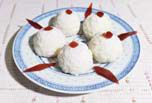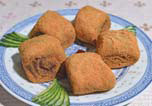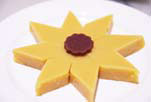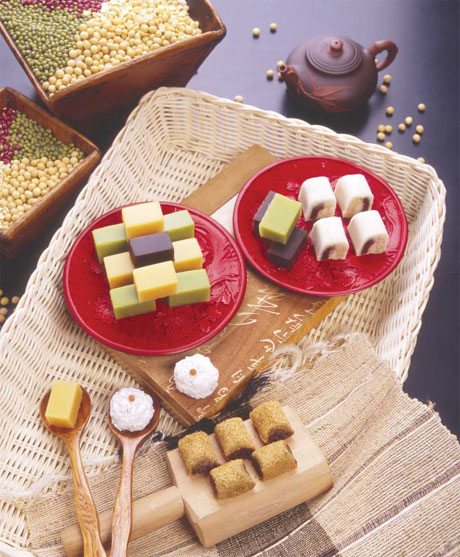Beijing sweet and savory
Updated: 2016-06-10 08:34
By Pauline D. Loh(China Daily Europe)
|
|||||||||
Editor's note: To understand China, sit down to eat. Food is the indestructible bond that holds the whole social fabric together and it is also one of the last strong visages of community and culture.
Beijing is a sprawling international city where regional and international cuisines offer more dining choices than there are days in a year. But barely 100 years ago, it was a very different story.
When the emperors, officials and the imperial court were still in residence, the folks living outside the walls of the Forbidden City were merely cogs in the great machinery that kept those inside well-fed and well-clothed.
|
|
While Beijing may boast of decadent court cuisine in the imperial kitchens of the past, the city had no particular culinary identity. It is still deciding.
The common folks living in the old alleyways were mainly merchants and craftsmen from other provinces who settled there many generations ago. They were the original migrant workers.
One group became a major if unexpected influence on what Beijingers ate. This was the Muslim community, mainly Uygurs from the Xinjiang Uygur autonomous region who had traveled to the capital along the Silk Road with other merchants of West Asian origin. Over the years, they made Beijing their home.
Muslims have a long history here, and the oldest mosque in Beijing is tucked away in the Islamic quarters just behind Caishikou, near Xuanwumen. It is well kept and is allegedly older than even the Forbidden City, which was built during the Ming Dynasty (1368-1644).
Uygur chefs brought their food with them because they couldn't eat at non-Muslim restaurants. Soon, they established their own eateries - the famous mutton hotpot restaurants like Donglaishun and Lailaishun - and they became known for their cooking of beef tripe, now recognized as a Beijing specialty.
Their snack shops offered a variety of fried and baked pastries. Many adopted local ingredients and flavors, and again, over time, they became part of the city's epicurean traditions.
If a Beijinger goes visiting friends in other provinces, he or she will likely bring boxes of pastries - the Eight Big Pieces, or badajian - made from Chinese jujubes, candied osmanthus flowers, candied plums, candied haw fruit, and red and green bean pastes, all encased in flaky pastry using vegetable oils.
Many of these have their origins in Muslim bakeries.
In an old alleyway that used to house the imperial tributes temple, Huguosi, a time-honored Beijing Muslim snack shop still does a roaring trade every day. A halal establishment, the Old Beijing Snack Shop was awarded intangible cultural heritage status for its delicious contributions.
Here, old folks can still stop by for a taste of their childhood.
On the weathered hardwood stools, elderly women and men bring their grandchildren for mid-morning snacks. While the young ones feast on flaky pastries and toasted soybean-floured sticky rice cakes, charmingly named Donkey Rolling in the Dust, the old folks are likely slurping up bean juice.
Bean juice is that last threshold that separates a Beijing native from the later immigrants. It is the fermented whey left over from tofu making and is definitely an acquired taste.
Once you get past the smell, which is reminiscent of a market dumpster at day's end, the taste itself is not bad, especially as it comes with a little platter of salted vegetables and a couple of fried dough rings.
Another option is the fried flour tea, or miancha, served with a thin layer of sesame paste on top. Despite its name, it's more a porridge than a tea, and is a cheap and satisfying snack. It actually reminds me of certain Middle Eastern foods such as hummus and tahini.
My husband grew up in the Beijing alleyways, and his favorite childhood tidbit was the "donkey" snack lyudagun. The dusting of yellow soybean flour apparently reminded people of the sturdy donkeys who used to trot through Beijing's nine city gates. After their burdens were unloaded, they loved nothing better than a dirt bath, rolling in the yellow dust.
There is also the beautiful aiwowo, a snow-white soft cake made with glutinous rice and filled with honey, osmanthus flowers, candied green plums and red candied haw. It is an attractive and tasty little dumpling, and reportedly became the Empress Dowager Ci Xi's favorite slum food after she tasted a goodie smuggled into the Forbidden City by one of the eunuchs.
There are also egg and flour dough balls coated in sesame seeds and deep-fried until they split apart. These are called kaikouxiao, smiling pastries.
Many are nothing more than plain dough, stretched and twisted, deep-fried and drizzled with syrup, and then dusted with sesame seeds. The famous Beijing mahua is simply thick strands of dough twisted into a rope and fried until it is crisp and crunchy.
Sanzi is the savory version, which is pulled into long, thin noodles that fan out in the hot oil. These crackers are sometimes flavored with fermented bean curds, but they are mostly plain flour and slightly salted.
A healthier snack is the pea-flour wandouhuang, which is based on a recipe smuggled out of the imperial kitchens. The more delicate and perhaps authentic cake can still be sampled in restaurants offering imperial cuisine.
For normal Beijing folks, all that matters is that it is tasty, satisfying and cheap. It is a curious chapter in Beijing's food history, but the city owes much of its love of sweet pastries to a little group of settlers from the past, just as now, the city's large population of young migrants is rewriting culinary traditions by introducing various foods from their home provinces.
paulined@chinadaily.com.cn
Capital's pastries at a glance
Aiwowo

A soft, snow-white cake made from steamed glutinous rice hiding a syrupy filling of candied fruits. It is often decorated with a little piece of red haw jelly on top.
Mahua
A crisp and crunchy Chinese doughnut made by twisting thick strands together and deep-frying them thoroughly. The cooked twists are often coated with sesame seeds.
Paicha
A lighter relative of mahua, the dough strands are stretched thinner and longer and shaped into elaborate curlicues to be carefully fried so it keeps its shape. Often, the finished product looks like a beautiful Chinese knot.
Haw jelly cake
Hawthorn trees are abundant around Beijing, and their tart, red fruits are harvested and cooked down into a soft sweet and sour cake, which can then be cut into strips and further dried and dusted with sugar. The Chinese name, jingtiaigao, translates into sweet strips from Beijing.
Zimituan
This is made from nutty, deep-purple glutinous rice that is steamed, sweetened and then shaped into little balls. Toasted peanuts and sesame seeds are added for more crunch and aroma.
Soybean-dusted glutinous rice rolls

Lyudagun, or donkey rolling in the dust, is such a graphic name that you cannot help but be charmed. This is actually just another cake using the most common ingredients of glutinous rice flour and red bean paste. What makes this one so special is the generous coating of toasted soybean flour, and its name.
Zhagao
A simply named but immensely popular cake. Mashed glutinous rice is beaten into a dough, made into balls and filled with sweet bean paste. The rice balls are flattened and then deep-fried into sticky cakes with a crusty coat. It sounds heavy and it's not something you can eat a lot of, but it's definitely a Beijing favorite.
Naiyou zhagao
This is a much lighter version of the zhagao. It has a texture almost similar to choux pastry and is served liberally dusted with the cottony powdered sugar that Beijingers love so much.
Wandouhuang

One of the most popular sweet cakes of Beijing, this is made from pea flour and has a velvety texture. Culinary legend says the recipe originated from the imperial kitchens.
Zhagezhi
These are a popular snack, even though they are nothing but tight rolls of deep-fried pastry that taste like spring roll wrappers. The name itself is a homophonic reference to the crunch of the pastry disintegrating in the mouth.
Today's Top News
The can-do generation to the fore
Riding the wave
China lists first sovereign offshore RMB bond on LSE
British PM denounces Brexit's 'complete untruths'
47% of European businesses would expand in China
Xi urges Washington to boost trust
Council of Europe unveils security convention
Former PM warns of chaos in case of Brexit
Hot Topics
Lunar probe , China growth forecasts, Emission rules get tougher, China seen through 'colored lens', International board,
Editor's Picks

|

|

|

|

|

|








